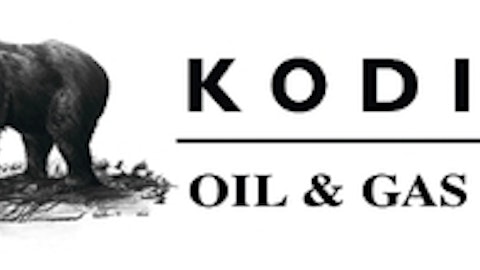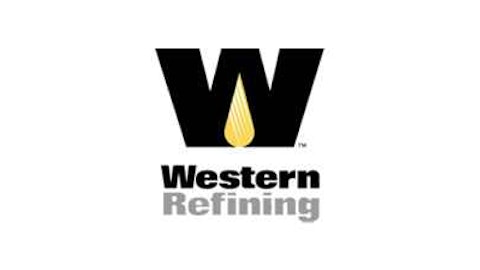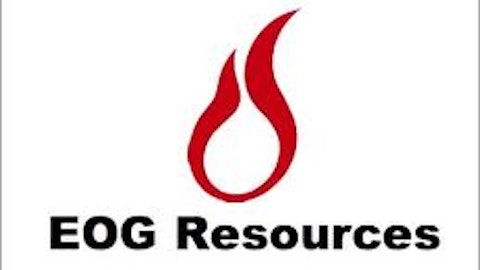While U.S. crude oil production has soared over the past few years, insufficient transportation infrastructure has led to an oversupply of oil in the American Midcontinent. This has helped drive down the price of domestic oil benchmarked to West Texas Intermediate (WTI) in comparison to the global oil price, which is benchmarked to Brent.
Oil refining companies with access to cheap WTI have enjoyed strong margins, solid earnings, and a surge in their share prices. In contrast, refineries without access have had to rely on expensive crude oil imports, which has whittled down their margins.

Growing pipeline capacity to Houston
As production from major oil plays in Texas and North Dakota has risen rapidly over the past few years, midstream companies have stepped in to provide outlets for these growing volumes of oil. Significant progress has already been made in terms of pipelines linking major centers of oil production in Texas, like the Eagle Ford Shale and the Permian Basin, to Houston, where many refineries are located.
Last year, we saw new capacity from south Texas to Houston in the form of the Eagle Ford Enterprise pipeline, which is operated as a 50/50 joint venture between Plains All American Pipeline, L.P. (NYSE:PAA) and Enterprise Products Partners L.P. (NYSE:EPD). The system includes a 140-mile crude and condensate pipeline, as well as an additional 35-mile pipeline segment, with a targeted capacity of 350,000 barrels per day.
Also serving production from the Eagle Ford is Kinder Morgan Energy Partners LP (NYSE:KMP)‘s recently constructed pipeline that originates in the Eagle Ford and transports crude oil and condensate to several terminal facilities, which then provide access to Gulf Coast refiners. The pipeline, known as the Kinder Morgan Crude Condensate pipeline, went into service in June and has a targeted capacity of 300,000 barrels per day.
Another major pipeline that went into service in April of last year – the West Texas-Houston Access project – serves the Permian Basin, another highly productive oil play in the western part of Texas. The pipeline, operated by Sunoco Logistics Partners L.P. (NYSE:SXL), links existing pipelines from Goodrich, Texas, to Houston and had an initial capacity of up to 40,000 barrels per day.
U.S. Gulf Coast: the coming deluge
Many more such projects are expected to come on line this year, providing additional capacity to Houston.
For instance, the first phase of Magellan Midstream Partners, L.P. (NYSE:MMP)‘ Longhorn Reversal project is nearing completion. The project entails reversing the flow of the Crane-to-Houston segment of the company’s existing Longhorn Pipeline, which transports refined products from Houston to El Paso.
It will primarily serve production from the Permian Basin, which will be transported from nearby Crane, Texas, to Houston. Once the pipeline goes into service, which is expected this quarter, it should have an initial capacity of 75,000 barrels per day and another 150,000 barrels per day by the end of the second quarter.
In addition to projects like these that will transport domestic crude to the Gulf Coast, further inflows of crude produced outside our borders are likely to further boost Gulf Coast crude supply. Two major sources are expected to be offshore wells in the Gulf of Mexico and Canada’s tar sands.
Consequences of rising Gulf Coast crude supplies
One of the positive impacts of rising volumes of crude into the Gulf Coast has been refiners’ reduced reliance on foreign imports of light sweet crude oil. For years, the nation’s refiners have depended on this type of oil – which is less viscous, has a lower sulfur content, and is easier to refine than heavier grades – from countries like Nigeria and Angola.
But thanks to growing production and recent improvements in transportation, the U.S. has markedly reduced its imports of West African crude. Since 2010, imports from Nigeria have fallen by half, while Angolan imports have declined from an average of 543,000 barrels per day in 2008 to under 200,000 barrels per day currently.
The impact of this dramatic realignment of light sweet crude supplies was evident in the earnings releases of some of the major refining firms that have Gulf Coast operations. For instance, Valero Energy Corporation (NYSE:VLO) , which has seven refineries near the Gulf Coast, said that it has replaced all imports of foreign light sweet crude with domestic crude at its Gulf Coast and Memphis refineries.
This massive influx of cheap crude is expected to boost Gulf Coast refiners’ already high operating rates further. John Auers, an analyst at petroleum and refinery consulting firm Turner Mason, projects that domestic light crude runs to Gulf Coast refiners will increase by well over 1 million barrels per day, which should make the region virtually independent from foreign imports of light sweet crude by the year’s end.
Not only do these developments bode well for the bottom lines of Gulf Coast refiners that have the capacity to process light oil, but they also offer renewed hope for America’s reduced dependence on foreign crude oil.
The article Crude Oil Deluge to Hit U.S. Gulf Coast originally appeared on Fool.com and is written by Arjun Sreekumar.
Fool contributor Arjun Sreekumar has no position in any stocks mentioned. The Motley Fool recommends Enterprise Products Partners L.P. and Magellan Midstream Partners, L.P.
Copyright © 1995 – 2013 The Motley Fool, LLC. All rights reserved. The Motley Fool has a disclosure policy.





